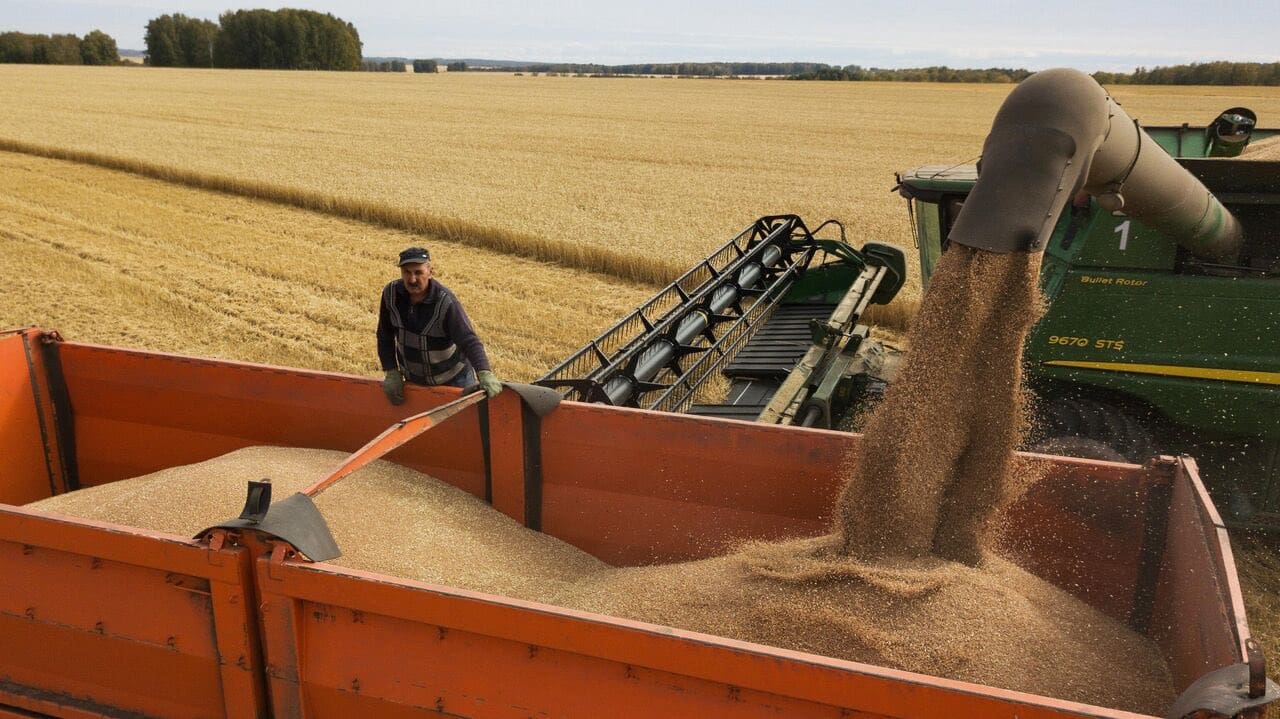
Harvesting grain in Russia in a recent season. Photo: Russian Union of Grain Exporters
IN THE MID 1980s, Russia and the USSR were major importers of wheat. The average seasonal imports were around 18 million tonnes (Mt) prior to the collapse of the USSR, peaking in the 1984-85 season at a touch over 28Mt, with Russia accounting for roughly 50 percent. Fast-forward to today, and Russia alone is forecast to export 53.5Mt of wheat. The change has been massive, and has significantly altered the global wheat market landscape.
Clearly, one of the biggest changes was the collapse of the USSR and the development of independent countries. Russia has always had strong economic involvement in global commodity markets, but its agricultural industry was bogged very much in Soviet-era practices in the early days. Farming methods, equipment, and attitudes were well behind Western benchmarks, and as a result, its productivity and profitability struggled.
In the early 2000s, it became apparent that government policy on agriculture was changing, and the landscape was becoming more favourable for Russian farmers and their agricultural industry. Farming became more privatised, farming practices improved, equipment was updated, and an increased area was put into agricultural production.
The bottom line for wheat markets is that Russia has moved from producing 30Mt of wheat annually and being a significant importer to now producing around 90Mt of wheat and being the number-one wheat exporter globally. Since the late 1990s, Russia has gone from zero wheat exports to around 25pc market share of global trade flows. If we add in the other two key Black Sea origins of Ukraine and Kazakhstan, the market share from the region increases to around 37.5pc, underlining the region’s importance for global wheat markets.
In comparison, Australia’s market share of global exports has remained largely steady in the 10-15pc range. The big change has come from the US, which has slipped from around 25-30pc market share to now owning less than 10pc of annual trade flows. This has completely changed market dynamics, and flipped some of our traditional views on wheat fundamentals.
Russia drives values
Initially Russian wheat struggled, but it was increasingly accepted by global consumers, slowly at first and then much quicker as supply increased and marked improvements in quality and reliability were made. The discount at which global consumers would buy Russian wheat narrowed sharply to the point where Russian wheat now dominates many destination markets at or near full market price.
It is often true that old habits die hard, and global wheat markets have traditionally looked to the US futures markets as their major sentiment indicator. This was extremely valid, given that the US was the dominant supplier of wheat globally. While it can remain true to some degree, the US market is no longer the major driver of global wheat values, with Russia and, to a lesser degree, Europe now holding the baton.
These changes have effectively played out over the past 25 years or more, but the wider market has lagged a little in accepting Russia as the new force in global wheat markets. This can, in part, be because the US market system has strong transparency and accountability, whereas these features are less apparent in the Russian market. This may change over time, but the conflict between Russia and Ukraine has muddied the waters, and the increasing government interference in Russian grain markets suggests that things may not change anytime soon.
The recent exclusion of multinational trading companies has reinforced the view that transparency in the Russian market will likely remain complex. On the one hand, the global wheat market has been excited by the growth and improvements in the Russian wheat market, but on the other hand, it is challenged by the increasing complexity that a dominant Russia has added.
There have been examples over time of the crazy impacts the Russian market has had on global wheat values, with none more prominent than when the Russian government banned wheat exports during the 2010-11 season. Russia was experiencing drought conditions, and the government was concerned that it would export too aggressively and not maintain sufficient supply for domestic use.
This was at a time when Russia held a much smaller percentage of the global market at around 13pc, or 18Mt, of wheat exports. However, the sudden loss of Russian supply sent wheat markets up US400 cents per bushel, from 440c/bu to 840c/bu over the following five weeks, as markets tried to digest the likely disruption.
Changed dynamic
So, where do we sit today? Russia now dominates the global wheat market, and the rest of the market participants are more vulnerable to increased volatility as a result.
Russia and the wider wheat market have become accustomed to producing around 90Mt of wheat and exporting around 50Mt, or close to 25pc market share. Russia has been the cheap source of milling wheat for global consumers, and they have been happy to take the mantle. Russian farmers are typically lower-cost producers, and they have been able to maintain their position in the market, even as production costs have increased. In many respects, global consumers have become addicted to cheaper Russian wheat.
What happens now if we have a major issue with Russian wheat supply? It would be relatively easy to throw global wheat markets into chaos, and hence, we need to remain cautious and very much alert around Russian dynamics. Information flow out of Russia is unpredictable, and wheat stocks in other key export origins are near multi-year lows. We would not describe the current situation as bullish for wheat values today, but things can change quickly, and weather issues in the major wheat exporter demand our utmost attention.

HAVE YOUR SAY